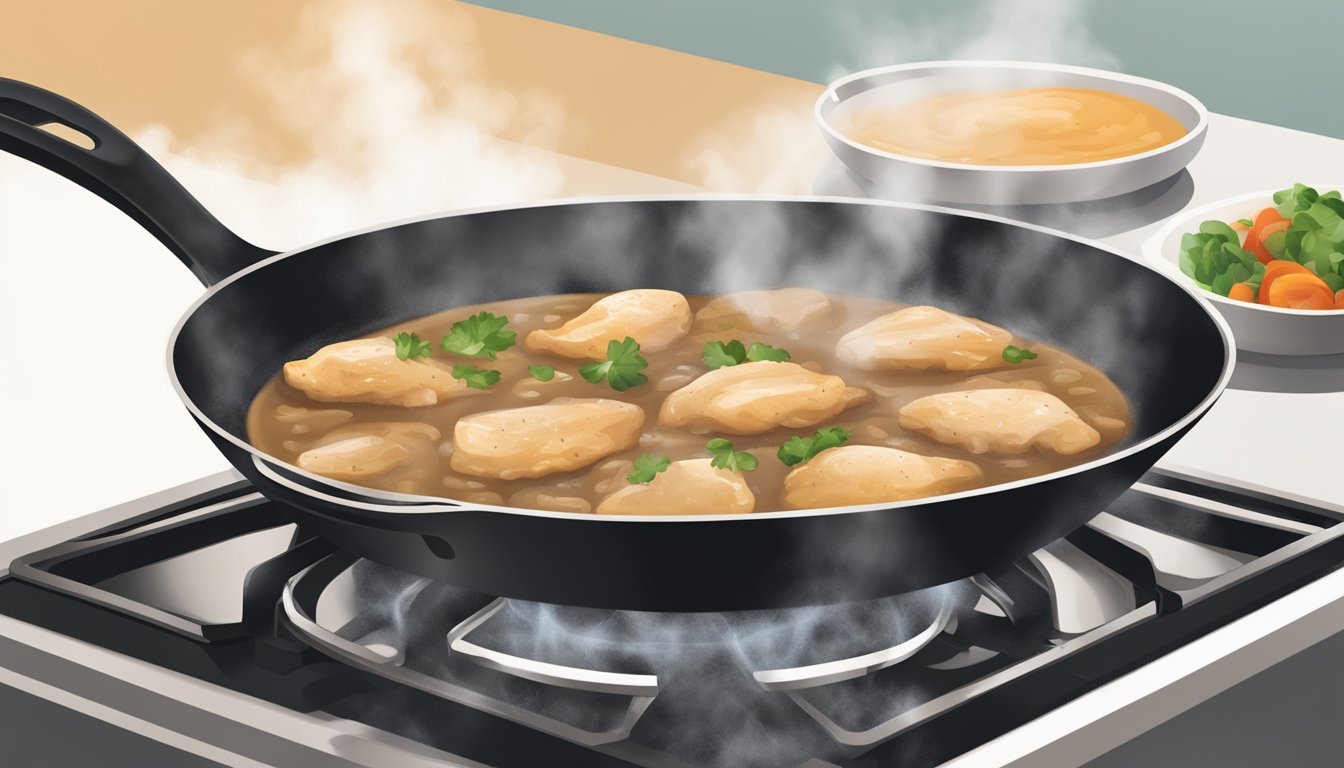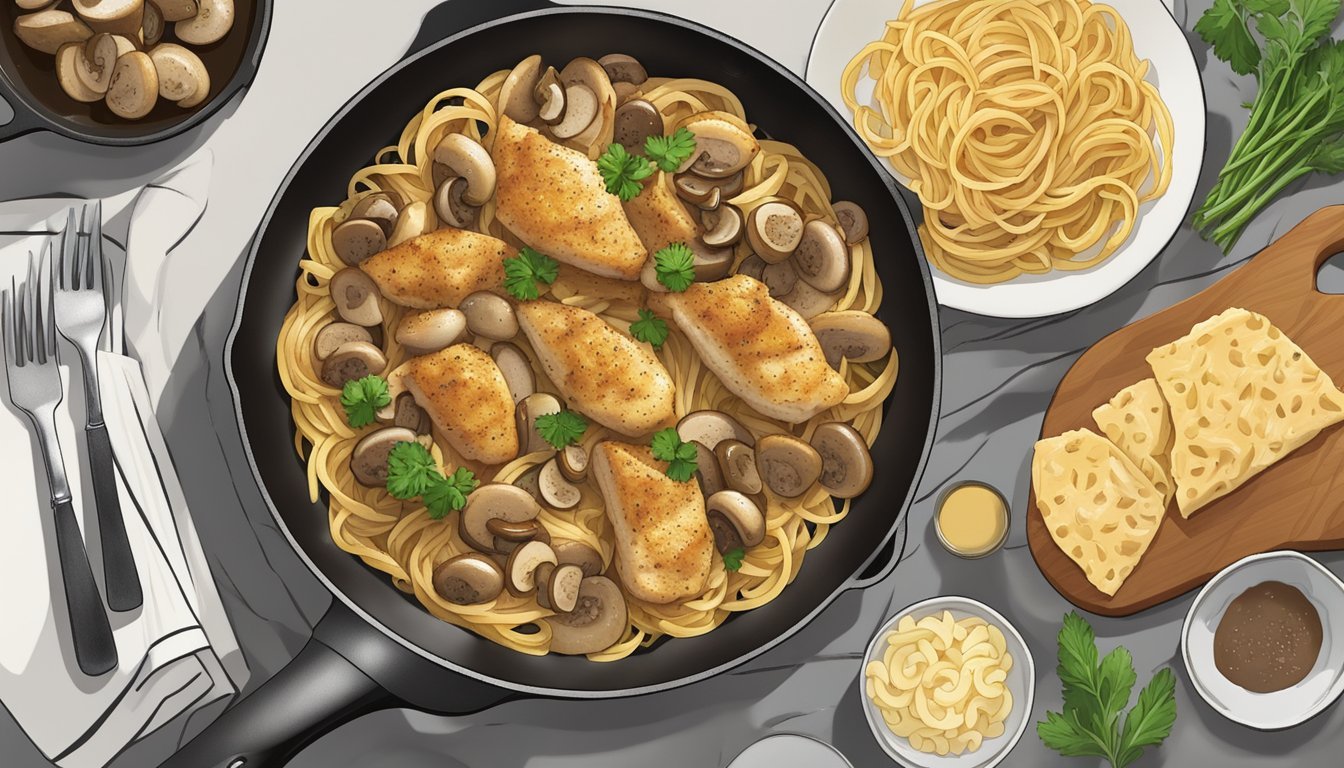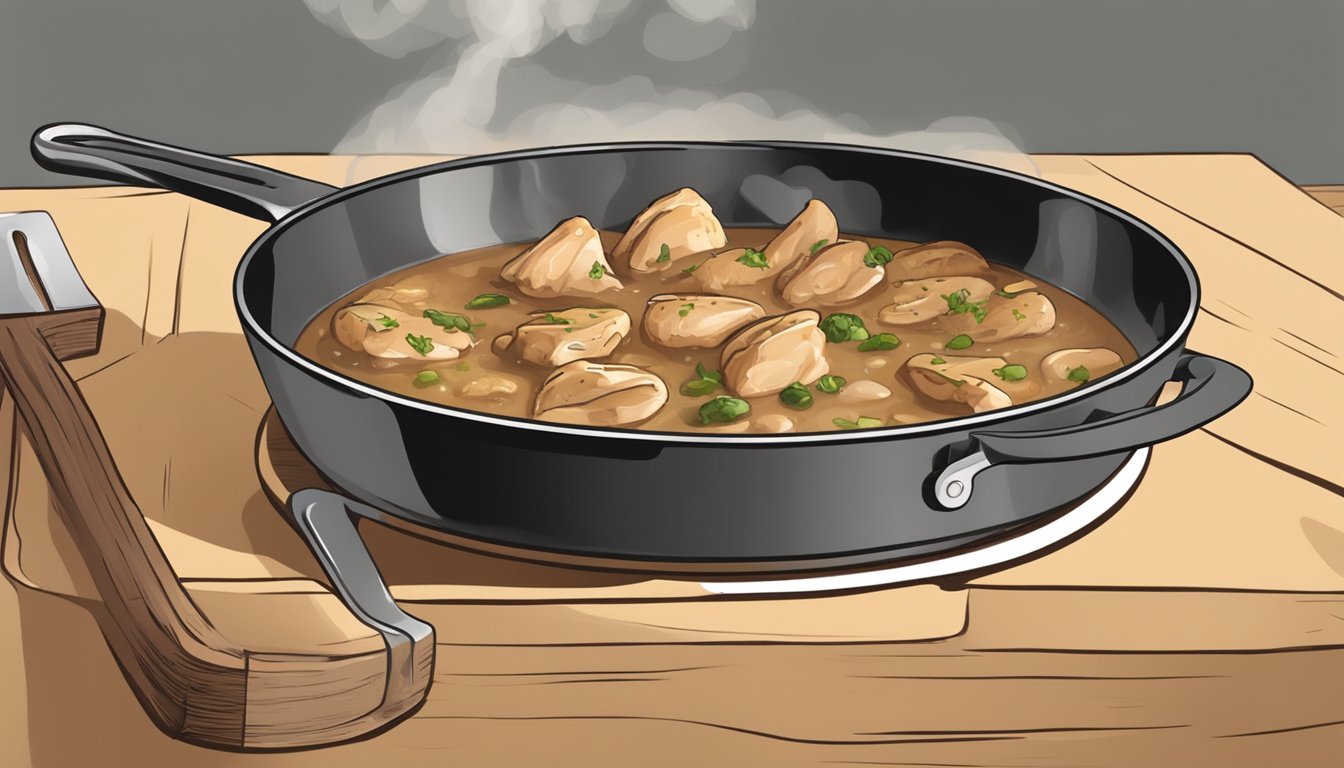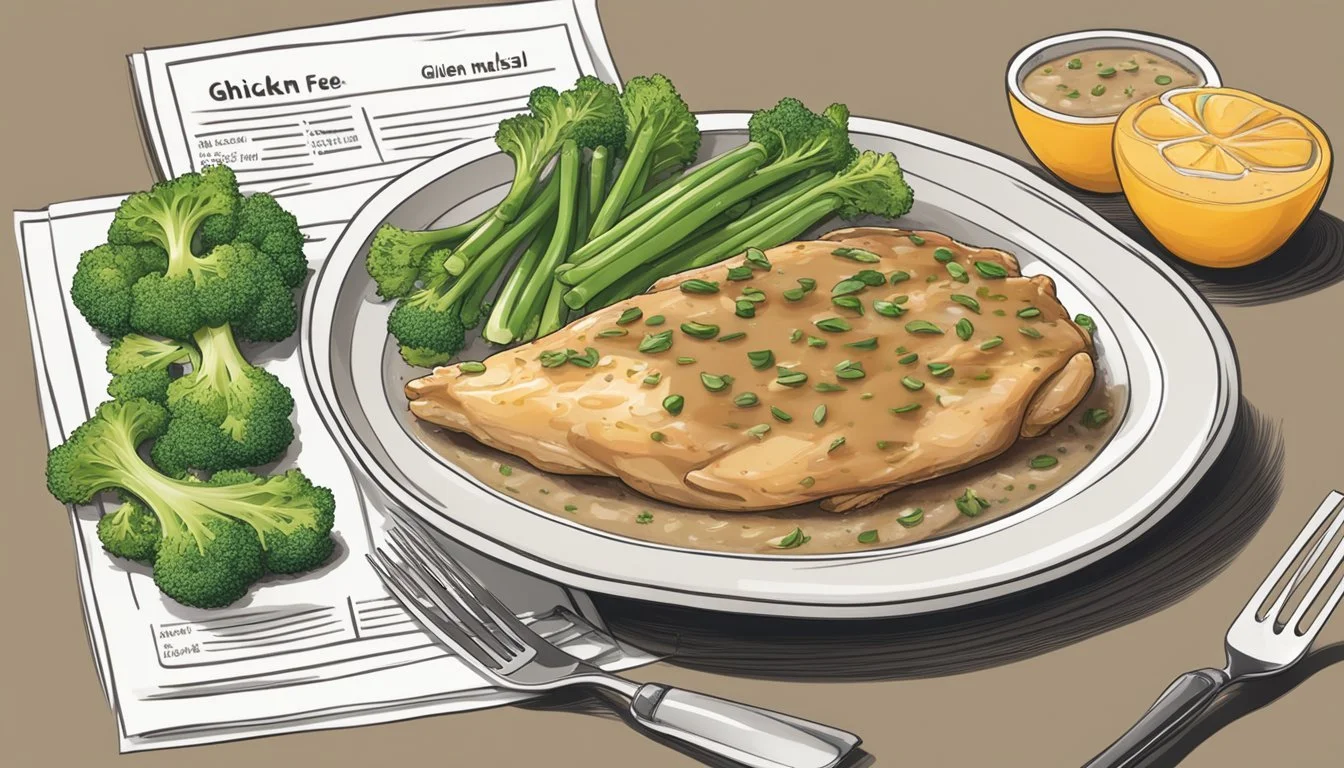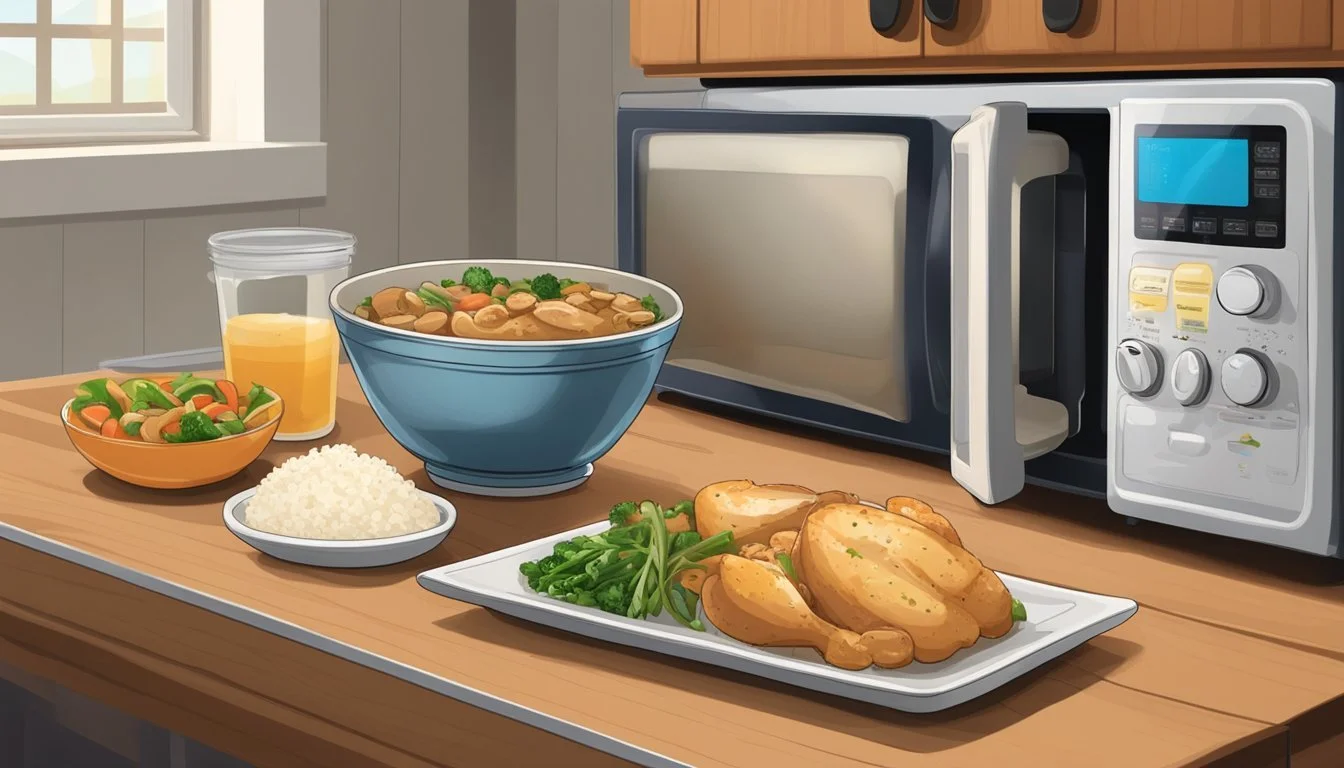How to Reheat Gluten-Free Chicken Marsala for Perfect Taste and Texture
Reheating gluten-free Chicken Marsala doesn't have to be a complicated process. Using an oven to reheat the dish is ideal, ensuring the chicken remains tender and the sauce stays flavorful. Preheat the oven to 350°F (175°C), place the Chicken Marsala in an oven-safe dish, cover it with foil, and reheat for 15-20 minutes.
For those short on time, the stovetop method provides a quick and efficient alternative. Pour the Chicken Marsala into a skillet over medium heat and stir occasionally to prevent the sauce from burning. Allow the dish to simmer for 5-7 minutes, ensuring the chicken is heated through without losing its moisture.
Avoid using the microwave as it often results in a less desirable texture for both the chicken and the sauce. Instead, consider using an air fryer for a quicker option that preserves the dish's integrity. Setting the air fryer to 350°F (175°C) and heating for 3-4 minutes can provide excellent results.
Understanding Gluten-Free Diets
A gluten-free diet involves avoiding the protein gluten, which is found in grains like wheat, barley, and rye. This section explores what constitutes a gluten-free diet, the benefits of gluten-free Chicken Marsala, and tips for selecting gluten-free ingredients.
What Does Gluten-Free Mean
Gluten is a protein found in grains such as wheat, barley, and rye. Individuals with celiac disease, gluten sensitivity, or certain allergies must avoid gluten to prevent adverse health effects.
Gluten-free diets eliminate all sources of gluten. This involves using alternatives such as gluten-free flour and avoiding gluten-rich foods like traditional pasta and bread.
Labels on products help identify gluten-free food. Look for certifications or clear indications such as "Certified Gluten-Free" to ensure absence of gluten.
Benefits of Gluten-Free Chicken Marsala
Cooking gluten-free Chicken Marsala caters to dietary restrictions while offering delicious flavors. One benefit includes using gluten-free flour for dredging the chicken, which substitutes traditional flour without compromising taste or texture.
Offering gluten-free options can make meals more inclusive for those with dietary constraints. This also allows individuals to maintain their favorite dishes, like Chicken Marsala, within their dietary requirements.
The dish remains nutritious and flavorful by incorporating naturally gluten-free products such as chicken and marsala wine, making it a favorite without the gluten.
Selecting Gluten-Free Ingredients
Ingredients should be chosen carefully to avoid gluten contamination. Opt for gluten-free flour for dredging and thickening sauces.
When adding gluten-free pasta or sides, ensure they are explicitly labeled gluten-free to avoid hidden sources of gluten. Fresh and organic vegetables are excellent for adding nutrients without risking gluten exposure.
Read ingredient labels meticulously and purchase from trusted brands that offer gluten-free products. Keep a list of safe ingredients to streamline shopping and cooking processes.
By focusing on verified gluten-free ingredients, one can prepare delicious and safe meals, maintaining the integrity and flavor of traditional dishes like Chicken Marsala.
Preparation of Chicken Marsala
Preparing Chicken Marsala involves cleaning and tenderizing the chicken, seasoning it, and then dredging it in gluten-free flour. Each step is essential to achieving the perfect texture and flavor.
Cleaning and Tenderizing Chicken
Start with boneless, skinless chicken breasts. Rinse the chicken under cold water to remove any impurities. Pat the chicken dry with paper towels.
Use a meat mallet to tenderize the chicken breasts. Place the chicken between two sheets of plastic wrap. Pound them uniformly until they are about 1/4-inch thick. This ensures even cooking.
Proper tenderizing helps the chicken cook thoroughly without becoming dry. This step is crucial for a juicy and flavorful Chicken Marsala.
Seasoning the Chicken
Season the tenderized chicken with salt and black pepper. Be generous to enhance the flavor of the dish. Both sides of the chicken should be well-coated.
For additional flavor, some chefs add garlic powder or Italian seasoning. This adds an aromatic element to the dish. Seasoning is pivotal as it lays the foundation for the dish's taste profile.
Dredging Chicken in Gluten-Free Flour
Dredge the seasoned chicken in gluten-free flour. Ensure the flour is evenly distributed, covering all surfaces of the chicken.
Shake off any excess flour. Use a shallow dish for this process; it makes coating easier.
Heating olive oil and butter in a skillet, sear the chicken until golden brown on each side. This creates a crispy exterior while keeping the chicken tender inside. Cooking time is typically 3-4 minutes per side.
The gluten-free flour helps achieve a satisfying texture without compromising dietary restrictions.
Following these steps ensures your Chicken Marsala is prepared perfectly, ready for the next stages of cooking.
Cooking Techniques
Mastering gluten-free chicken marsala involves sautéing tender chicken and mushrooms, deglazing the pan to capture deep flavors, and simmering the sauce to its creamy perfection.
Sautéing Mushrooms and Chicken
Begin by heating a mix of avocado oil and butter in a large skillet over medium-high heat. The combination of fats ensures a balance between richness and a high smoke point.
Add cremini mushrooms, seasoned with garlic, sea salt, and black pepper. Sauté until they release their moisture and develop a deep umami flavor, becoming slightly crispy around the edges.
Transfer the mushrooms to a plate and, in the same skillet, add more oil if needed, followed by the gluten-free chicken fillets. Cook the fillets until they are golden brown and cooked through, then set them aside.
Deglazing the Pan
Deglazing the pan is essential to incorporate all the deep, savory flavors from the sautéing process. Pour dry marsala wine or sherry into the hot skillet.
Allow the alcohol to simmer for a few minutes, scraping up the browned bits with a wooden spoon. These bits add depth and complexity to the sauce. Continue to reduce the wine until its volume decreases by half, intensifying its flavors.
At this point, you can add a bit of chicken stock for added richness. Ensuring that the alcohol is properly reduced helps to avoid any overly harsh flavors.
Simmering the Sauce
Once the wine reduction is ready, it’s time to create the creamy mushroom sauce. Add the sautéed mushrooms back into the skillet, along with a mix of heavy cream and herbs such as fresh parsley.
Simmer the mixture on a low heat until the sauce thickens, stirring occasionally. Return the chicken fillets to the pan to soak in the flavors.
Let the chicken warm through, absorbing the sauce's rich, creamy texture. Adjust seasonings to taste and serve immediately to enjoy the tender, flavor-rich chicken marsala.
Serving and Pairing
Gluten-Free Chicken Marsala pairs beautifully with a variety of side dishes and can be elegantly presented for a perfect meal. Consider different options such as pasta, potatoes, or rice to complement the rich flavors.
Presentation Ideas
Keeping presentation elegant yet simple highlights the natural beauty of Chicken Marsala. Use white or light-colored plates to contrast the rich brown sauce. Garnish with fresh herbs like parsley or thyme for a splash of color.
A few perfectly steamed asparagus spears arranged neatly on the side can also add a touch of sophistication. Try serving the chicken fillets slightly overlapping each other with the Marsala sauce drizzled strategically to avoid overloading the plate.
Accompaniments and Side Dishes
The rich, flavorful sauce of Chicken Marsala pairs wonderfully with gluten-free pasta or rice. Gluten-free pasta serves as an excellent base, absorbing the sauce well. For a lighter option, consider cauliflower rice, which adds a mild flavor and keeps the dish low in carbs.
Another complementary side dish is mashed potatoes, which provide a creamy texture that complements the chicken. Roasted asparagus or steamed green beans can add a vibrant color and fresh crunch to the plate.
The dish also goes well with toasted gluten-free bread to soak up the rich, savory sauce. Opt for sides that balance the meal without overpowering the main flavors.
Nutritional Information
Reheating gluten-free Chicken Marsala does not significantly alter its nutritional content. It is essential to understand the caloric and nutrient components for anyone mindful of their diet.
Caloric Consideration
A typical serving of gluten-free Chicken Marsala contains approximately 350-450 calories. The caloric content may vary based on the ingredients used, such as the type and amount of oil or butter. The Marsala wine sauce accounts for a portion of these calories, primarily from the wine and butter.
Macronutrients and Micronutrients
Protein
Chicken Marsala is high in protein, providing around 25-30 grams per serving. This protein stems mostly from the chicken breasts.
Fat
The dish contains 15-25 grams of fat, attributable to cooking oils and butter. Avocado oil, olive oil, and ghee can alter the fat composition.
Carbohydrates and Fiber
Typically, this dish will have around 10-15 grams of carbohydrates. If gluten-free flour is used for dredging the chicken, the fiber content can be minimal, approximately 1-2 grams.
Sodium
Sodium content can be high, ranging from 500-800 milligrams per serving, depending on the amount of added salt and the type of broth used.
Sugar
The Marsala wine adds a small amount of sugar, often around 2-4 grams per serving, due to its natural sugars.
Micronutrients
The dish provides essential minerals like iron and potassium. Vitamin content is mild, with some B vitamins derived from the chicken and sauce ingredients.
Variations and Substitutions
Adjusting gluten-free Chicken Marsala for dietary needs is straightforward. Here, explore how to make it dairy-free and which cooking wines can substitute for Marsala.
Dairy-Free Modifications
To make gluten-free Chicken Marsala dairy-free, replace butter with avocado oil or ghee. Both options provide a neutral flavor while maintaining richness in the sauce. Alternatively, use coconut oil for a subtle coconut essence.
For the sauce, substitute cream with coconut cream or cashew cream to keep the texture creamy and smooth. Almond milk or oat milk can also be used but may create a thinner sauce. Ensure that all replacements are certified gluten-free to maintain dietary integrity.
Alternative Cooking Wines
If Marsala wine is unavailable, several alternatives can mimic its unique flavor. Dry sherry is the closest match, bringing similar depth and subtle sweetness. Madeira wine is also a good substitute, offering robust flavor profiles.
For non-alcoholic alternatives, use a mix of white grape juice and balsamic vinegar. Combine them in a 3:1 ratio to achieve a balance of tanginess and sweetness. Another option is chicken stock with a splash of red wine vinegar, ensuring it complements the sauce without overwhelming it.
Storage and Reheating Tips
Proper storage is essential for maintaining the flavor and texture of gluten-free chicken marsala.
Store leftovers in an airtight container in the refrigerator. To keep it moist, adding a bit of extra sauce is recommended. If storing for longer periods, freezing in a freezer-safe container works well.
When it comes to reheating, multiple methods can be employed:
Oven: Preheat the oven to 350°F (175°C). Place the chicken marsala in an oven-safe dish, cover with foil, and reheat for 15-20 minutes, or until warm.
Stovetop: Pour the chicken marsala into a non-stick skillet. Add a splash of water, broth, or wine. Heat over medium-low heat, cover, and stir occasionally to prevent sticking and achieve even warmth.
Microwave: Although not recommended for the best texture, it can be used for quick reheating. Place the chicken marsala in a microwave-safe container, cover loosely with plastic wrap, and heat on high for 2-3 minutes.
Ensuring that the dish maintains its garlicky richness and flavor is key. Small reheating portions help achieve more consistent heating. The dish should remain gluten-free by using appropriate ingredients and handling techniques.
These simple steps will keep your chicken marsala tasting as delicious as the day it was first made.

